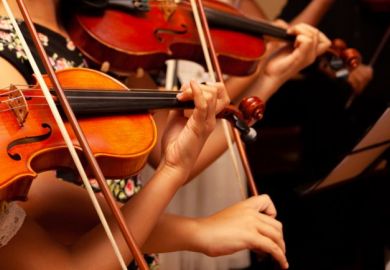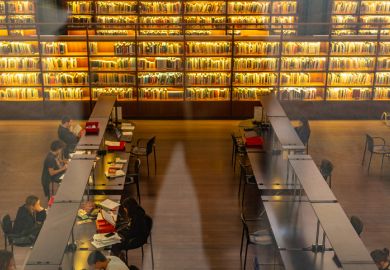The principal of an art college has set out his vision of a continuum of art education stretching from the age of three all the way through to master’s level.
Andrew Brewerton took over as principal of Plymouth College of Art in 2010. The college already had “a Saturday arts club as part of its commitment to the wider community”, he said, which each week saw about 160 children aged four to 18 “come for an experience increasingly unavailable in schools”. Reflecting on “the marginalising of arts subjects” within schools, “a culture of teaching to the test” and “a preoccupation with league tables”, the management team began to ask themselves what they should do.
What they soon realised, continued Professor Brewerton, was that “the logic of our position was to create a school. We are an art college. We make things. Let’s make a school.” There might have been no precedent, but if faith groups or parent groups could set up free schools, why shouldn’t an art college?
Their goal, as Professor Brewerton put it, was to “create a school around the ethos of making, as an approach to learning in all subjects”. While pupils in many schools think that “passing exams is not worth getting out of bed for”, Professor Brewerton and his colleagues hoped to “work with the intrinsic motivation of young people to learn”. So they put in an application for what became the Plymouth School of Creative Arts, which opened in 2011 and will soon cover the whole age range from four to 16, plus an early years class for three-year-olds. The final link in the chain was forged by a separate campus (and community centre), where 16- to 18-year-olds can study for an extended diploma validated by the University of the Arts London.
Plymouth College of Art was one of the founding associates of Tate Exchange, a new initiative in community-facing arts education that opens up the fifth floor of Switch House at Tate Modern for associates to put on an event of their choice. Plymouth therefore brought a group of 23 pupils and students, aged seven to 57, to London to create a school inside the Tate for three days. They also put on what Professor Brewerton called “a pop-up symposium, inviting a series of provocations on learning and creativity in learning”.
In his own contribution, he described the philosophy that underlies both the college and the school. Their key principle, he said, was that “making is as important as reading and writing, as science and maths”. Just as individual art students tend to define themselves as fashion designers or film directors rather than as students, “the purpose of learning is inseparable from that of living your life”. In learning, he added, “true certainty is the preserve of politicians (and they are welcome to it)”, while “the opposite of the aesthetic is the anaesthetic”.
The school, according to Professor Brewerton, had been consciously intended as “a catalyst for community transformation, social and economic development in Stonehouse, Millbay and Union Street, a red-light area in the west end of inner-city Plymouth that is included among the 10 per cent most disadvantaged neighbourhoods in the country”.
One of the places where the school adopted an innovative approach was the seemingly mundane question of food. Even the initial application to the Department for Education to establish the school noted: “Food is creativity and practical understanding: it is nutrition, health and culinary art; it is crafts and economics, design and entrepreneurship. Food is history and geography, it is culture and language in performance. Food culture is fundamental to human identity. Cuisine is teamwork and business and entrepreneurship, applying laws of chemistry and biology and physics.”
How this has played out in practice, Professor Brewerton told the audience at Tate Modern, revealed “the transformational potential of creative learning and enquiry for individual lives”.
“Something radical occurs when, with her learning experience in school, a girl of six years teaches her mother how to cook fish fingers for their supper with fresh ingredients, from scratch. When the child takes a lead in the learning of the family and – no longer consumers of processed freezer-food – mother and child become makers of their own experience, what happens is a moment of deep emancipation.”
POSTSCRIPT:
Print headline: Maths to fish fingers: arts-led education focuses on making it
Register to continue
Why register?
- Registration is free and only takes a moment
- Once registered, you can read 3 articles a month
- Sign up for our newsletter
Subscribe
Or subscribe for unlimited access to:
- Unlimited access to news, views, insights & reviews
- Digital editions
- Digital access to THE’s university and college rankings analysis
Already registered or a current subscriber?






